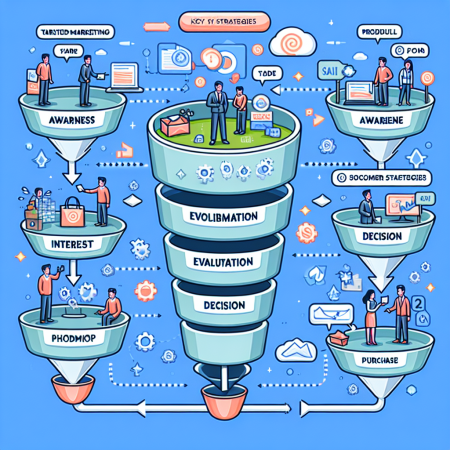How to Develop a Sales Funnel That Converts
Top 5 Semantic Keyword Phrases:
- Creating a Sales Funnel Strategy
- Optimizing Conversion Rates
- Lead Nurturing Techniques
- Sales Funnel Automation
- Measuring Funnel Performance
Creating a Sales Funnel Strategy
Understanding Your Target Audience
In order to create an effective sales funnel, you must first understand your target audience. This involves conducting thorough market research to identify their needs, preferences, and pain points.
By understanding your audience, you can tailor your messaging and offers to resonate with them, increasing the chances of conversion.
Utilize tools like Google Analytics and social media insights to gather data on your audience demographics and behavior.
Mapping Out the Customer Journey
Mapping out the customer journey is crucial in developing a successful sales funnel strategy. Identify the touchpoints where a lead interacts with your brand and outline the steps they take from awareness to conversion.
Consider creating different content and offers for each stage of the customer journey to guide leads seamlessly through the funnel.
Use tools like customer journey mapping software to visually represent the stages and interactions of your sales funnel.
Building Engaging Landing Pages
Landing pages play a vital role in converting leads into customers. Design compelling and visually appealing landing pages that clearly communicate the value proposition and encourage action.
Optimize your landing pages for speed, mobile responsiveness, and clear call-to-actions to increase conversion rates.
A/B test different elements of your landing pages to determine what resonates best with your audience.
Implementing Effective Email Marketing
Email marketing is a powerful tool in nurturing leads through the sales funnel. Develop personalized and targeted email campaigns that provide value and build trust with your leads.
Segment your email list based on lead behavior and interests to deliver relevant content that moves them closer to a purchase decision.
Track email open rates, click-through rates, and conversions to optimize your email marketing strategy for better results.
Optimizing Conversion Rates
Lead Nurturing Techniques
Sales Funnel Automation
Measuring Funnel Performance
FAQ
Q: How long does it take to see results from implementing a sales funnel strategy?
A: The time to see results from a sales funnel strategy can vary depending on various factors such as industry, audience engagement, and the complexity of the funnel. Typically, businesses start seeing improvements in conversion rates within a few weeks to a few months of implementing the strategy.
Q: What is the role of A/B testing in optimizing a sales funnel?
A: A/B testing, also known as split testing, allows businesses to experiment with different variations of their marketing elements to determine which ones perform better in terms of conversion rates. By testing elements like headlines, calls-to-action, and design, businesses can make data-driven decisions to optimize their sales funnel for higher conversions.
Q: How can businesses measure the effectiveness of their lead nurturing efforts?
A: Businesses can measure the effectiveness of their lead nurturing efforts by tracking key performance indicators (KPIs) such as open rates, click-through rates, conversion rates, and lead progression through the sales funnel. Monitoring these metrics provides insights into the engagement levels of leads and helps identify areas for improvement in the lead nurturing process.
Q: What role does CRM software play in sales funnel automation?
A: Customer Relationship Management (CRM) software plays a crucial role in sales funnel automation by centralizing customer data, tracking interactions, and automating tasks related to lead management and nurturing. CRM systems help businesses streamline their sales processes, improve customer relationships, and provide valuable insights for optimizing the sales funnel.
Q: How can businesses leverage analytics to measure funnel performance?
A: Businesses can leverage analytics tools like Google Analytics, marketing automation platforms, and CRM systems to measure funnel performance. By tracking metrics such as conversion rates, funnel drop-off points, customer acquisition costs, and customer lifetime value, businesses can gain valuable insights into the efficiency and effectiveness of their sales funnel and make data-driven decisions for improvement.

